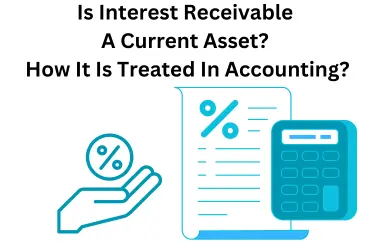Is Interest Receivable A Current Asset? How It Is Treated In Accounting

Interest receivable is the amount that a company has earned but has yet not been paid in cash or other economic resources.
Is Interest Receivable A Current Asset?
Interest receivables are the amount that the company expected to receive within a year or a business cycle so this account is normally considered a current asset but sometimes it takes more than one year in that case it is recorded as a non-current asset.
Companies are expected to receive interest from different sources. Some of the most common ways are the followings:
- When a company lends money to an individual or an entity
- When a company makes investments in bonds, stocks, and other assets
- When a company offers credit conditions to Its customers, it may charge some extra amount for their credit conditions, etc.
Interest receivables are recorded as follows in the balance sheet.
| Current Assets: | |
| Cash & Cash Equivalents | xxx |
| Accounts Receivable | xxx |
| ADD: Interest Receivable | xxx |
| Short Term Investments | xxx |
| Inventories | xxx |
| Total Current Assets | xxx |
What type of companies report interest receivable in their balance sheet?
Loan companies, banks, and other financial institutions show interest receivables on the balance sheet.
Why interest receivables are recorded as current assets in the balance sheet?
Interest receivables are recorded as current assets they are expected to receive within a year or a business cycle.
When interest receivables are recorded as non-current assets?
When a business is not expected to receive interest within a year, it is recorded as a non-current asset.
Are interest receivable and interest revenue the same?
Interest receivables are the amount that a company has earned but not yet received by its debtors while interest revenue is the amount that a company has earned and recognized in the balance sheet for the specific period.
What type of account is interest receivable?
Interest receivable is the outstanding amount that a company has not yet received but is expected to receive within a year and it is recorded in the current asset account.
